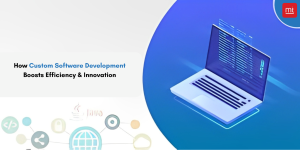3 Simple Steps to Improve Company Decision Making

Making good choices has always been integral to company success. However, the blueprint that constitutes sound decision making in organizations has changed on the heels of a fast-paced digital economy and unprecedented data generation.
The dozens of decisions businesses used to make now number in the hundreds, even thousands, depending on the firm. Without a concerted effort to address this process from a fundamental level, organizations are rolling the dice on their fate.
Improve the small and large everyday decisions your company makes with these three steps.
Understand, and Correct for, Biases
As much as we’d like to think we’re rational creatures, we tend to base choices on intuition and preconceived notions, then rationalize later. Cognitive biases influence the choices we make. These mental shortcuts stem from hundreds of thousands of years of evolution, but they’re meant to reduce uncertainty and lead us down a safe path. They’re not designed to foster innovation. An entire company making decisions this way puts a ceiling on novel ideas, limiting long-term growth.
Cognitive biases can be broken down into two types: information processing and emotional. The former is solved with new and better information, but the latter is a bit more challenging to tame, especially depending on the individual. A good start is learning how to spot the biases. Maybe you’re agreeing on a decision because it keeps with the status-quo of the team. Perhaps you’re favoring a choice because it carries a more concrete outcome than the alternative. In total, there are 16 different biases to monitor in decision-making. When we know the biases that influence our thinking, we can attack them by evaluating decisions with those biases removed.
Leverage Advanced Analytics Software
Overcoming our evolutionary instincts is integral to making good choices consistently. However, to conquer the other half of the bias dilemma—our emotions—we need a way to process the vast amounts of information we have available to us. Company infrastructure or specific processes can help us with how we make decisions, but it can’t make data accessible and digestible.
Companies have long used business intelligence platforms to tap into their data and mine insights. The problem with these legacy tools is that knowledge was only held by select professionals. Most employees had no way of accessing data to inform their own decisions without requesting a custom report that took significant time to produce.
These days, analytics software offers an entirely different experience thanks to the fusion of artificial intelligence in business applications. These tools, using natural language processing and machine-learning algorithms, allow any employee to search a company’s data archive and be fed instant answers via user-friendly data visualizations. Some platforms, such as ThoughtSpot, go a step further to automatically uncover hidden insights users may overlook — things like data anomalies, isolated trends, causal and non-causal relationships, and so on.
Give Employees More Autonomy
Advanced analytics tools go a long way in providing employees across a company with the ability to find their own answers. The simple act of being able to operate fluidly in a workflow will sharpen each individual’s critical thinking, as well as their morale.
As Tracey Maylet writes for Entrepreneur, while autonomy has many definitions, the one that’s most helpful in business contexts can be defined as “the power to shape your work environment in ways that allow you to perform at your best.”
How else can organizations grant employees autonomy aside from automated analytics tools? For one, building a workplace centered on trust communicates that every role can use their time how they choose. This allows different types of workers to follow the working style that aligns best with their personality. And when employees are given the liberty to navigate their workflows how they choose, they’re more likely to take ownership of their performance and outcomes.
Of course, this doesn’t mean companies should operate with a “free-for-all” mentality. Organizational boundaries should exist. But this usually means holding employees accountable for their results while giving them the ecosystem they need to succeed.
Regardless of the nature or size of a company, decisions present similar obstacles. Staying conscious of biases, using automated tools, and building a company culture that promotes individual autonomy will have businesses making wiser decisions and enjoying better outcomes.






